Tenerife is the largest of the Canary Islands, with a reputation mainly as a fly-and-flop beach holiday destination. The kind where most check in to a beachfront hotel and never leave the area…
But did you know Tenerife has spectacular mountains, scenic roads, Tinerfeño gastronomy, not to mention some lovely colonial-era towns?
I once read a report saying over 90% of visitors to Tenerife never leave the southernmost tourist enclave. It is such a shame, as the island can be downright spectacular. You haven’t truly seen Tenerife until you’ve experienced the sunset over Mt. Teide from one of its far corners.
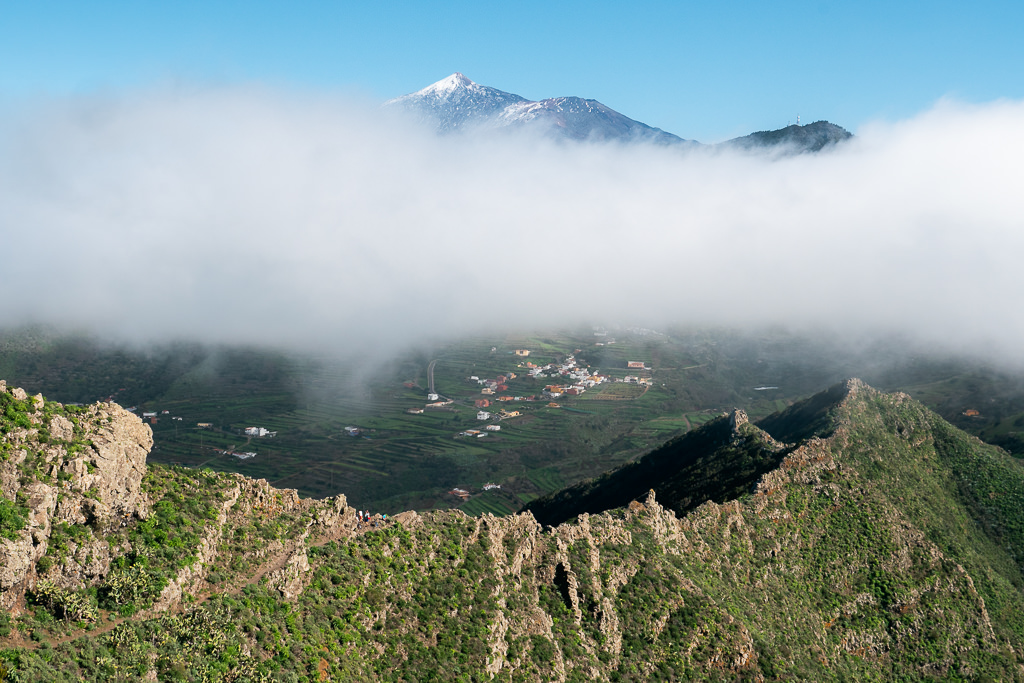
If you’re planning to stay at a Tenerife resort, but you’re also curious about seeing the island, then this guide is for you.
If you’re not planning a resort holiday but simply wondering what Tenerife has to offer in terms of culture, nature, or smaller-scale tourism, then this guide is for you as well. As someone who typically aims for ‘authentic’ places, Tenerife had plenty to offer to me — and repeatedly challenged any preconceptions I may have had about the island.
What are the best parts of Tenerife?
With a surface area of more than 2000 square kilometres, it takes about an hour to drive from one side of Tenerife to the other (via motorway), encompassing several topographies. The corner you select as your base to explore can highly affect your impression of the island.
The south is more arid and has more consistent sunshine, so the vast majority of hotels, resorts, and holiday apartments are located here.
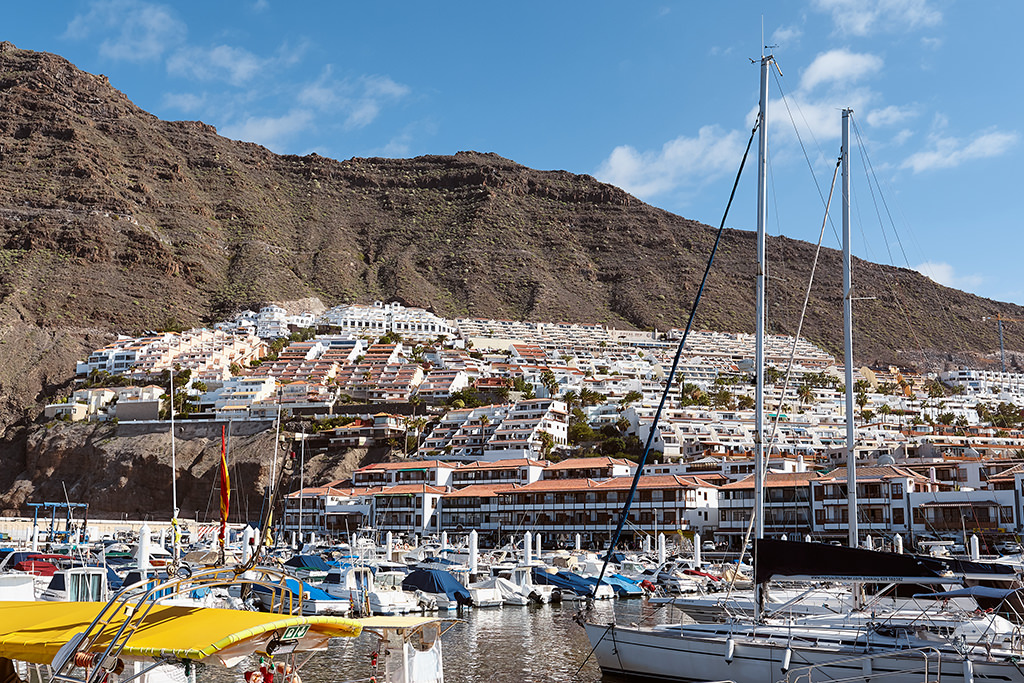
Playa de las Americas and Los Christianos are entirely planned around tourism and are therefore the favoured areas for package holiday operators such as TUI. It’s here that you’ll find all manner of entertainment, nightlife, and beach-oriented fun.
Culture vultures beware: you’re more likely to find an English breakfast on the menu than a Spanish tortilla. If you want a different experience in Tenerife, all you have to do is drive in any other direction.
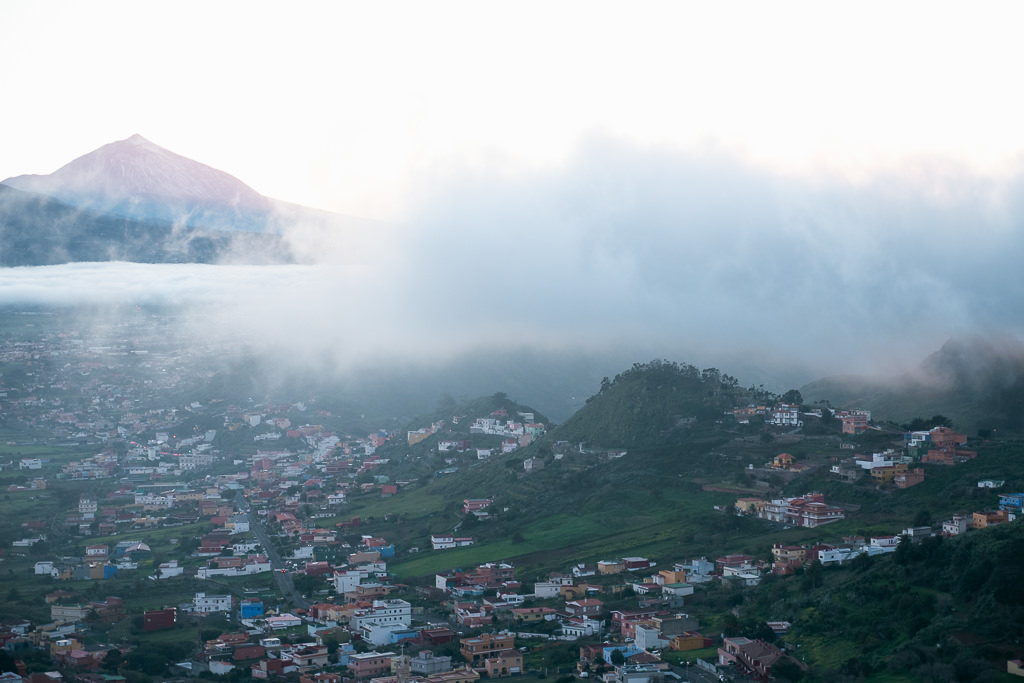
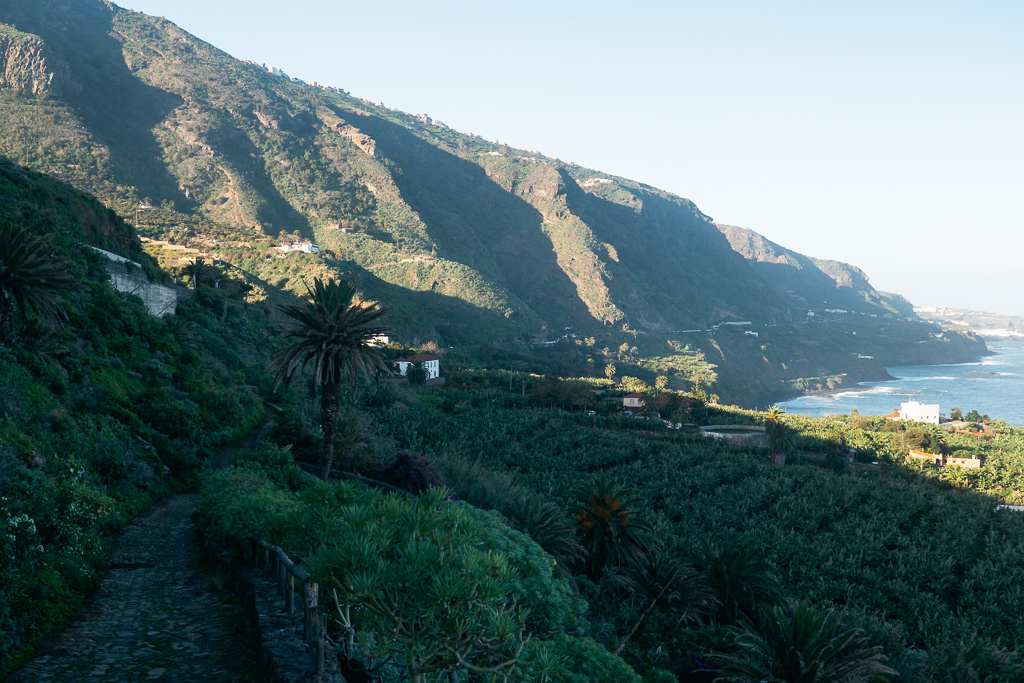
The north captures a few more clouds than the south, so Tenerife is lush and green here. Puerto de la Cruz is another (smaller) resort hub in the north, though you’ll find mostly a patchwork of smaller coastal towns besides this. In the northwest, the island’s circular 4-lane highway becomes a 2-lane provincial road. It is a quieter area to stay and lends itself very well to a wonderful road trip, with the breathtaking mountaintop town of Masca being a must-stop.
If your travel preference is cute places rather than commercial areas, then the north is your best bet. Several towns are very suitable for a self-organized holiday with ample B&Bs and smaller hotels on offer.
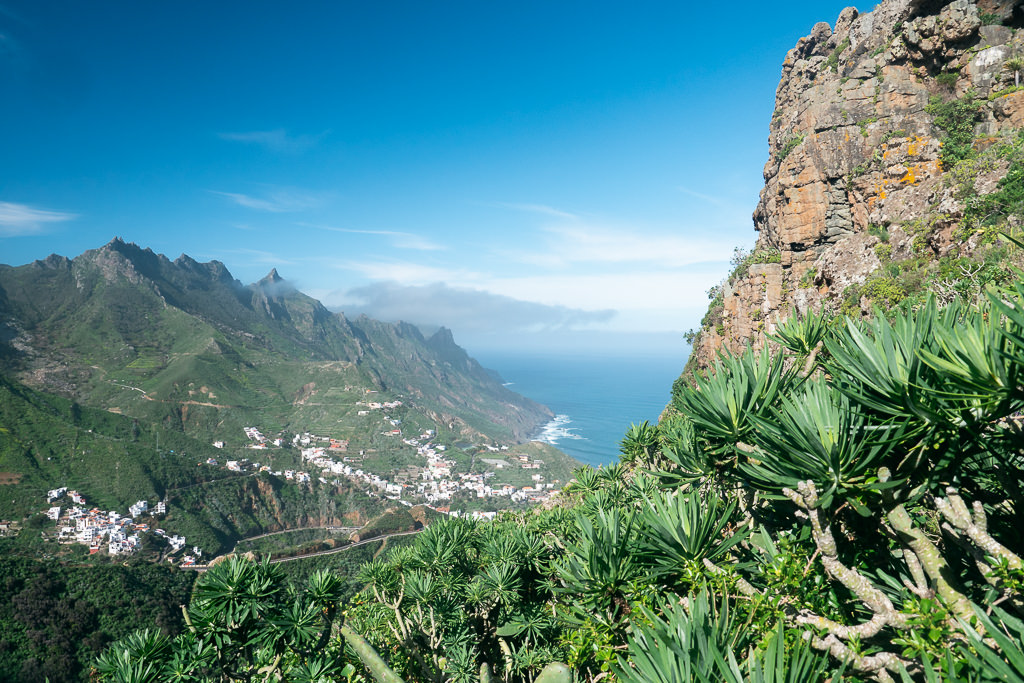
The northeast is home to the Anaga Mountains, offering spectacular vistas and superb hiking trails, with some parts feeling downright remote. This protected park is in many ways the polar opposite of the south. It’s the authenticity here that I, a somewhat snobby world traveller, loved exploring the most. If compared to much of the rest of Tenerife, Anaga, being so different, is virtually a destination in its own right.
Nature and hiking on Tenerife
La Palma or La Gomera often get tipped as the best hiking destinations among the Canary Islands. But as I reflect on my six weeks of island hopping in the Canaries, I must say that several of my favourite hikes were on Tenerife.
With over three-quarters of the island being part of a protected reserve, you have plenty of natural areas at your disposal.
If you can visit only one area, make sure you choose the Anaga Mountains. It’s a true hiking paradise with a whole menu of trails from which to make your selections.
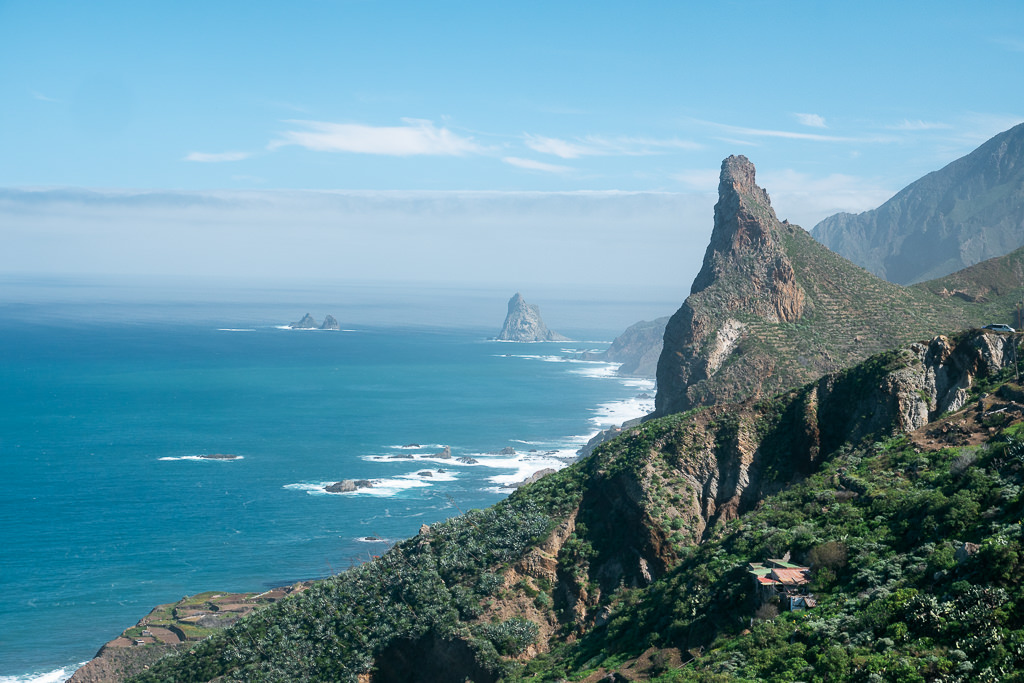
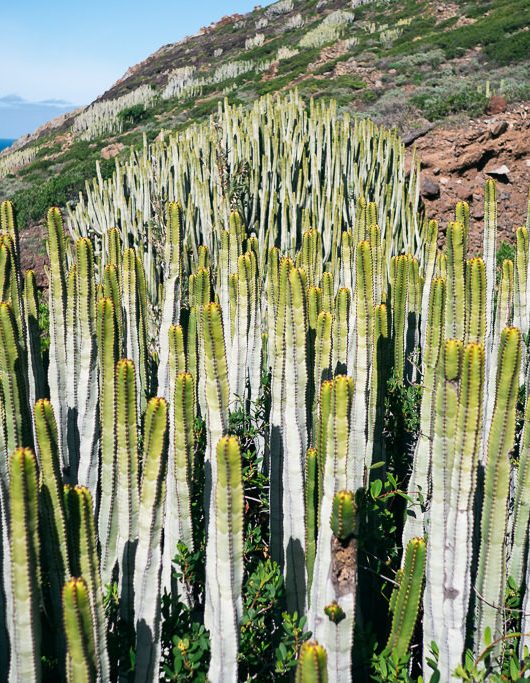
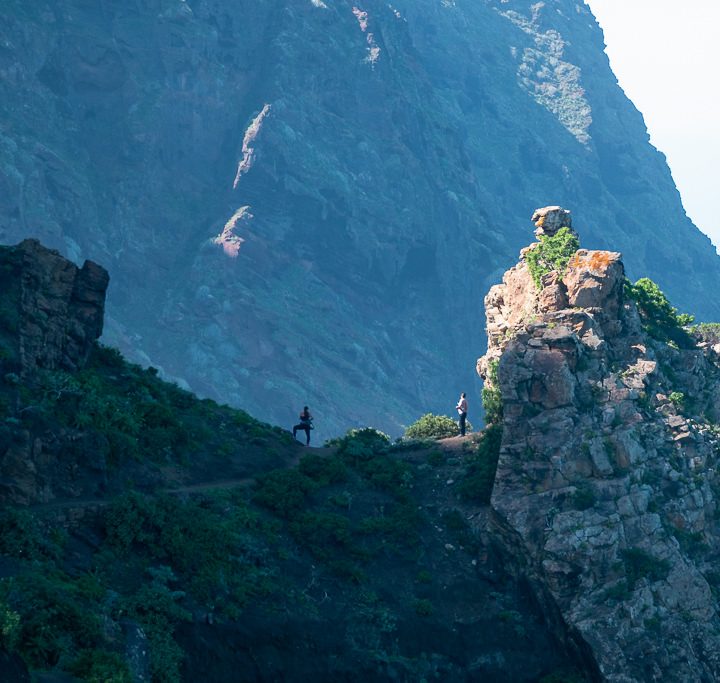
One shockingly good hike starts in the remote historical town of Taganana and follows the coastline to the wild beach of Playa de Tamadite. Pick a nice day to do this particular hike, as it’ll make you feel glad to be alive.
The volcanic rocks protruding from the ocean create an almost otherworldly backdrop, while the varied vegetation includes tapestries of cardón, an endemic cactus-like succulent that grows in thick bunches. It takes about two hours to walk to Playa de Tamadite, a stunning beach and a great place to have a little picnic before starting the two-hour walk back.
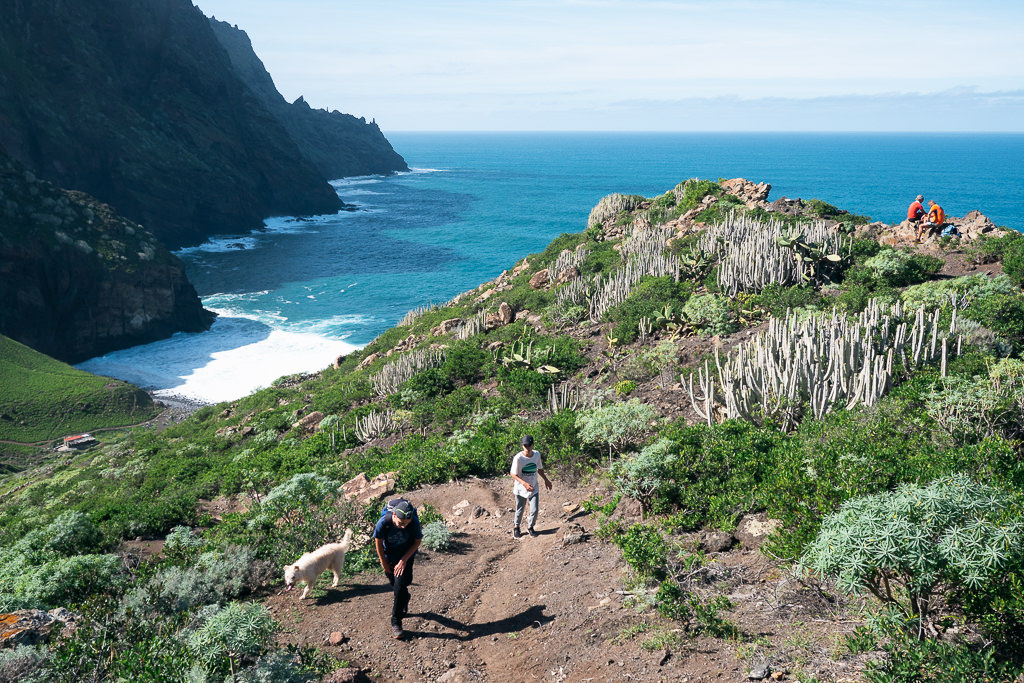
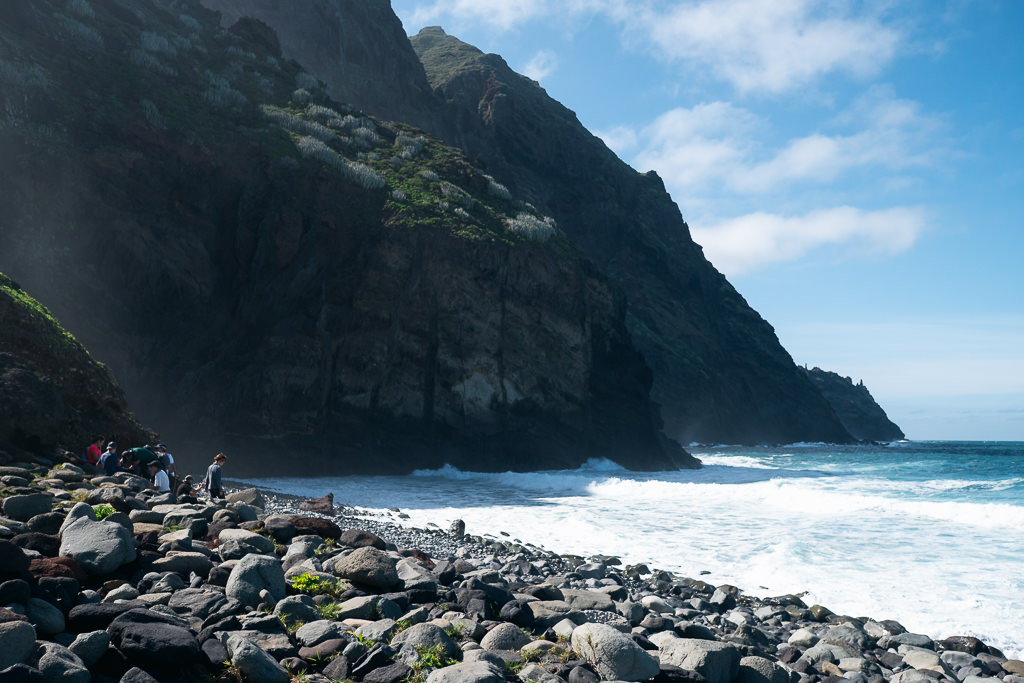
The hamlet of Chinamada is the centre point of another phenomenal hiking area. Notable for having several cave houses, this town’s mountain-rim location offers spectacular vistas that, frankly, made me see Tenerife in a different light. If you’re not keen on a very long hike, consider driving to Chinamada and taking a 30-45 minute stroll around the peak.
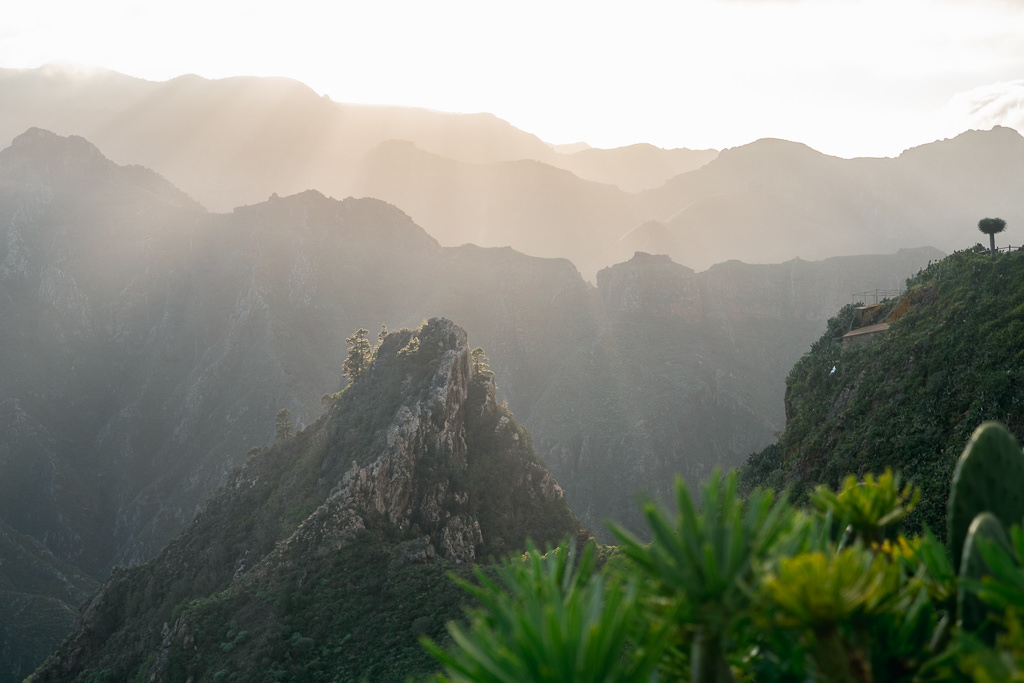
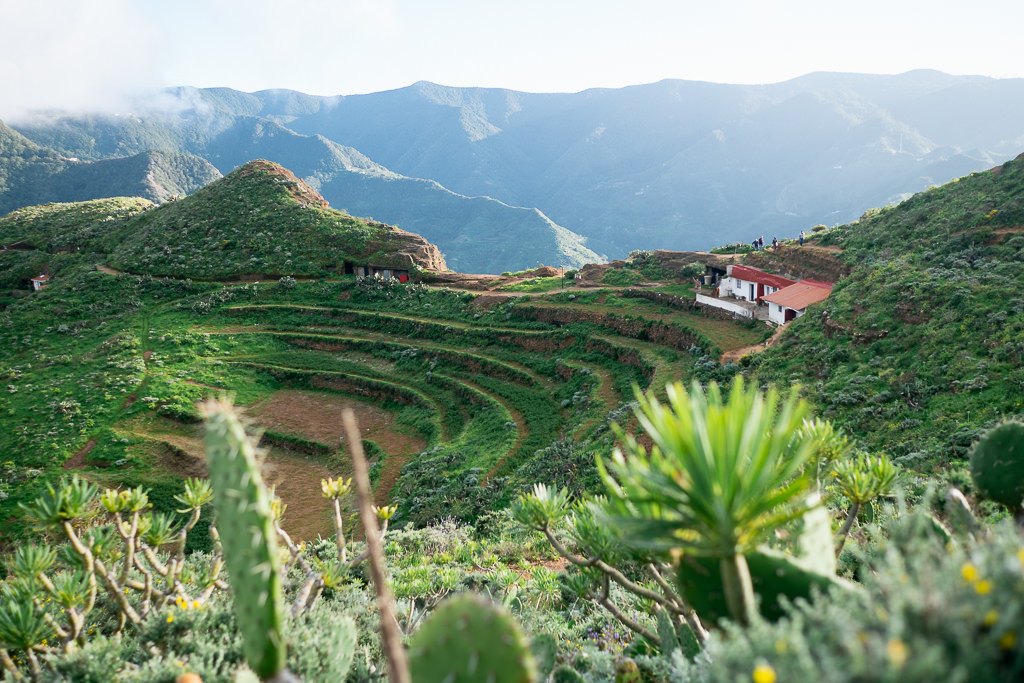
What makes islands so much fun to explore is that there is always an “end of the road” — at a remote place that will simply stop you unless you’re determined to drive into the ocean. On Tenerife, one such place is Chamorga, a tiny hamlet almost two hours from the capital of Santa Cruz via narrow mountain roads, ending in a distant valley.
At the local cafeteria, I enquired about WiFi to download a hiking map. “Amigo, here you don’t need any internet,” said a man reading a book with a dog on his lap. In fact, there was no internet or mobile signal in Chamorga at all.
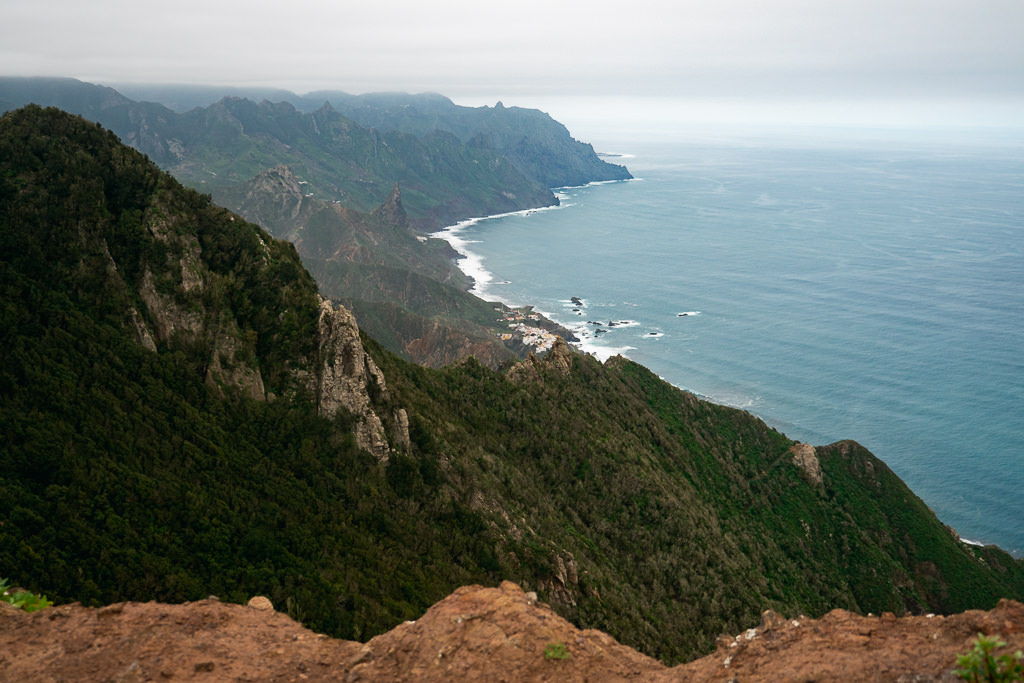
I would recommend Chinamada and Taganana as first picks for hikes, though going to the end of the road at Chamorga will definitely also make for a fun expedition. From there, you can hike to Faro de Anaga, a lighthouse on the furthest point that you can otherwise only reach by boat.
The northwest of Tenerife also provides some solid hiking opportunities — in my opinion, this area is second only to Anaga.
Sadly, I had to miss the renowned canyon hike through the Barranco de Masca, as it had been closed since 2019 due to an incident. I’ve been informed it has now reopened, though with certain regulations in place. It’s best to inquire locally as to the current status of this trail.
Another solid hike starts in El Palmar and goes into the Teno National Park. The first hour or so involves some very stiff uphill hiking, but it will reward you with gorgeous views of dramatic mountains and the island of La Gomera shimmering on the horizon, seemingly floating above the sea like a giant spaceship.
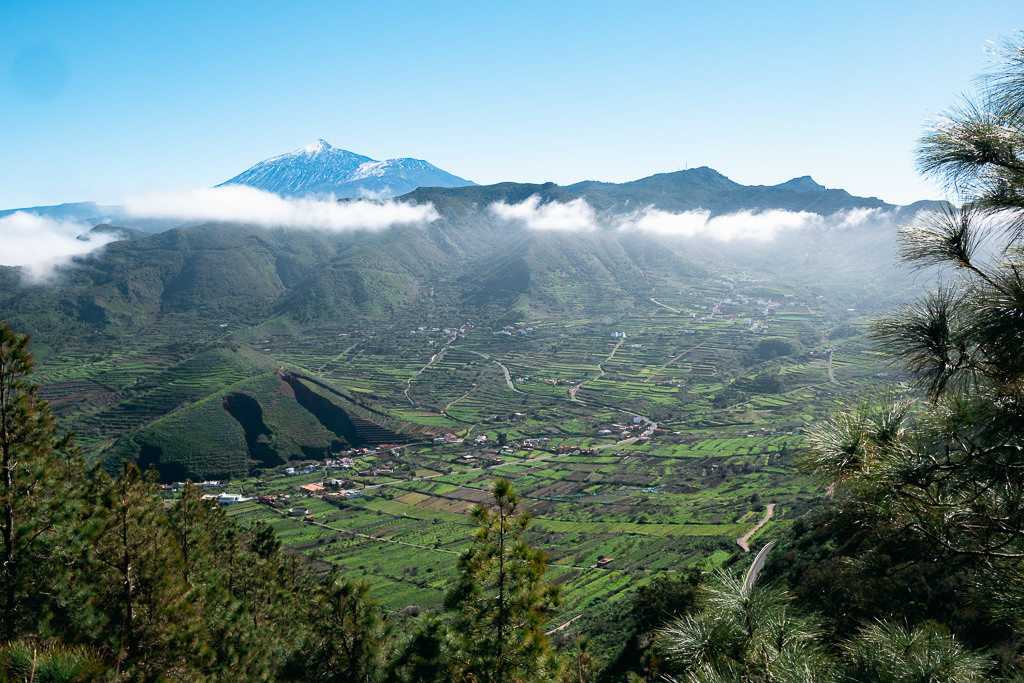
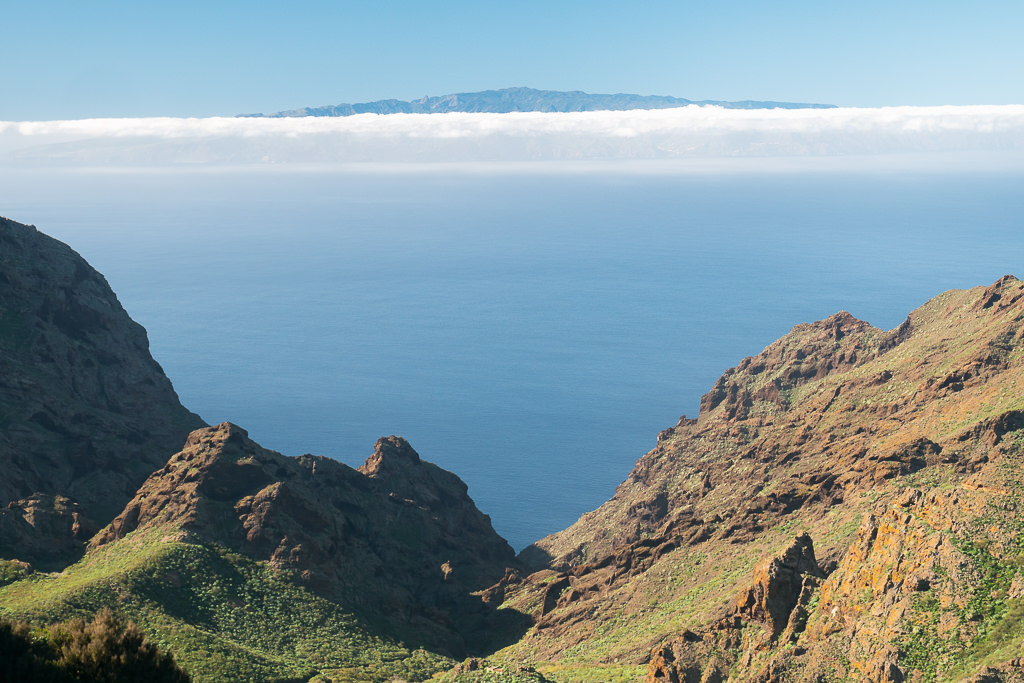
While Tenerife is highly developed, its nature is well preserved, with an array of flora and fauna to enjoy.
Case in point: I was amazed at how many lizards there are on Tenerife. On many of my walks, there were lizards upon lizards dispersing in my path like crabs on a beach. Based on my unscientific assessment, I would say at least half the island’s biomass is, in fact, lizard. Perhaps that’s a slight overestimation, but it definitely felt that way as I lost count of how many I saw. You can try to spot all the different types that are endemic to the island; among them are some fantastic blue- and red-spotted ones.

I found the best hiking areas on Tenerife in the lush semi-tropical environments, as they are so wonderfully detailed. However, Tenerife also has dense pine forests and moon-like landscapes inside the main crater.
The Roques de Garcia makes for an interesting landmark inside the crater. From this sight, which has a parking lot adjacent, there is an easy two-hour circular hike through the rocky landscape backed by volcanic walls and pinnacles.
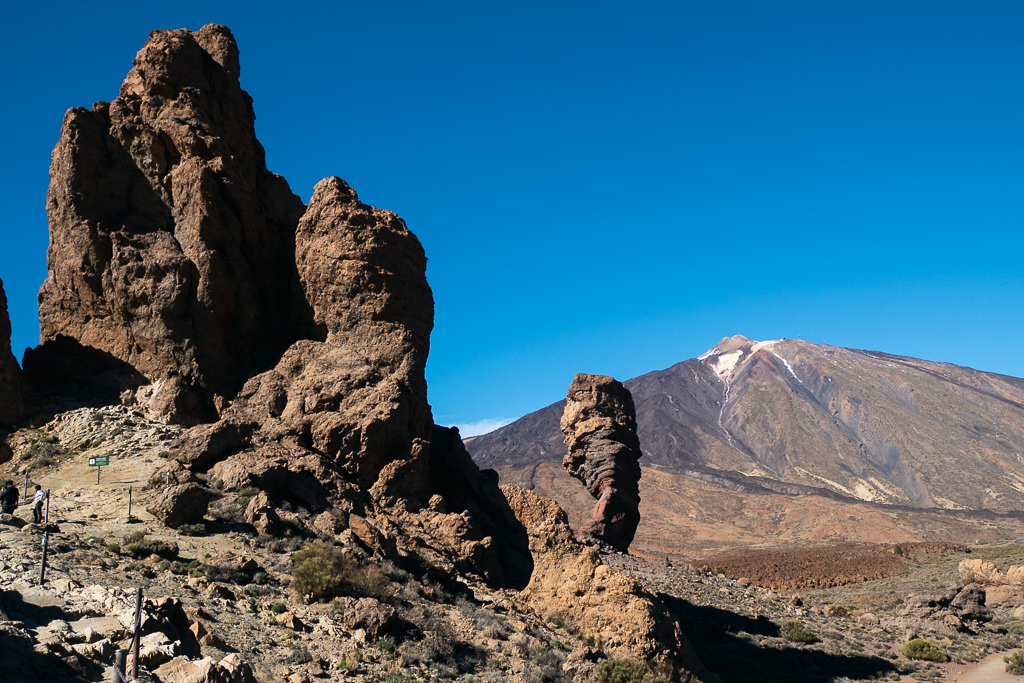
While La Palma and other islands are quieter and make for an ideal destination for a dedicated hiking trip, Tenerife’s hiking seems seriously underrated and overlooked. If the aforementioned hikes are not enough, this website written by two Brits with extensive knowledge of Tenerife offers a wealth of additional information on where to walk.
Things to do on Tenerife
Since this is an explorer’s guide, I will skip the obvious attractions, such as the water parks, the tourist beaches, and the nightlife. You will surely know where to find those! Instead, let me highlight a few other sights well worth seeing.
Get to the top of Mt. Teide
Tenerife’s star attraction is hard to miss, as it is visible from almost any part of the island. With an elevation of 3,715m, the volcanic peak of Teide is an impressive beast. It makes for a stunning backdrop, especially in winter when snow partially covers the ridge.
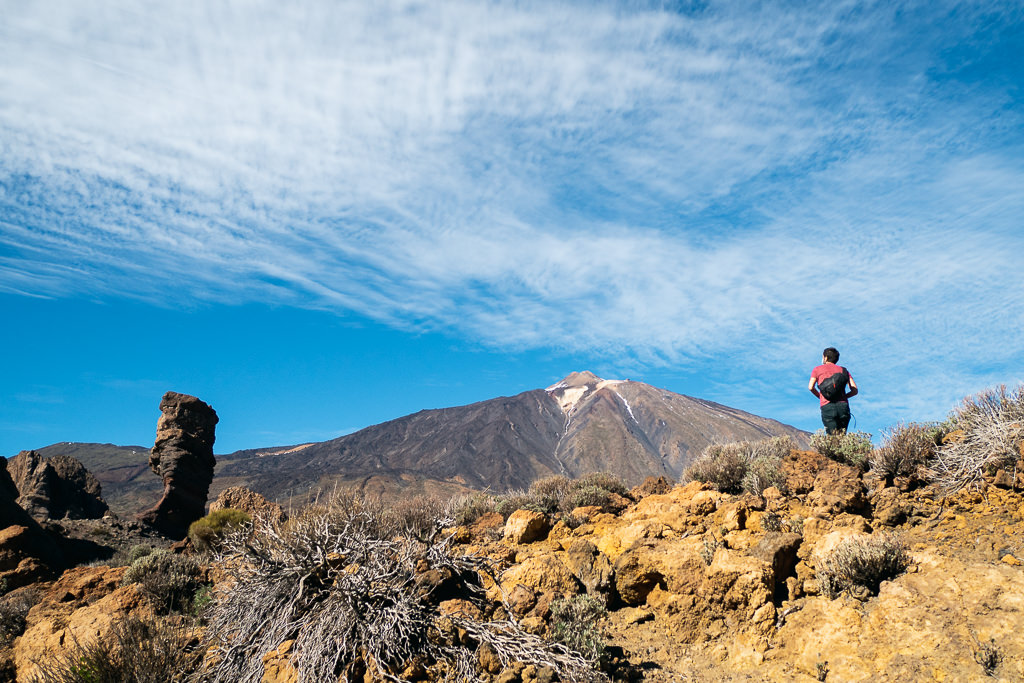
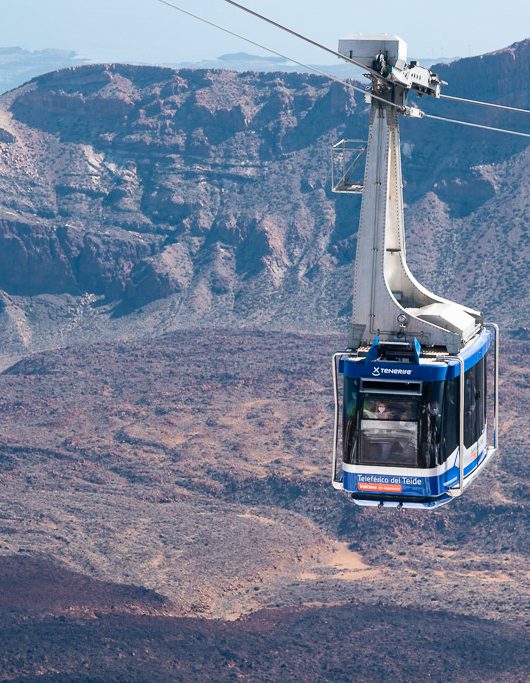
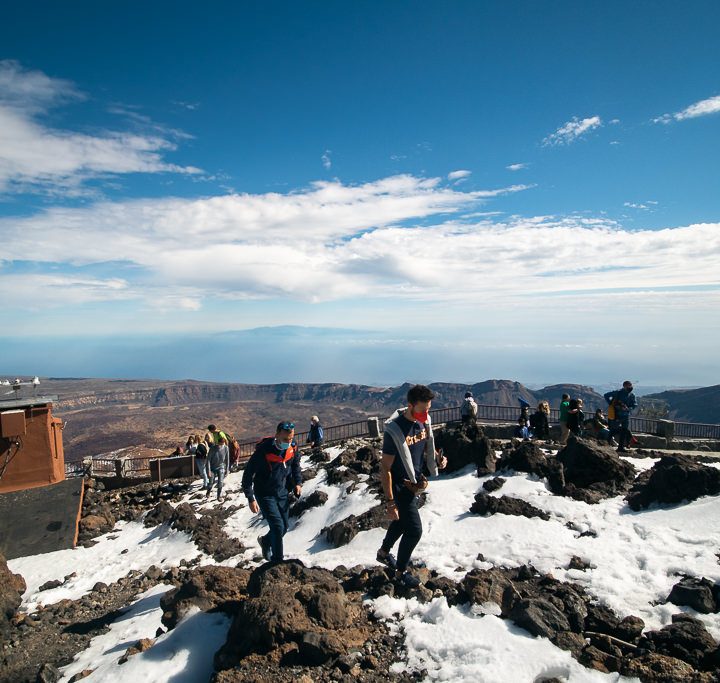
If you’re a very keen climber, you can follow some challenging paths up to the peak, with the last few hundred meters requiring a mountaineering license. Taking the cable car is the decidedly easier option.
The prices are a bit of a ripoff: €37 for a return ticket is nothing to sneeze at. A plethora of premium tickets are on offer, to the point where I was half-expecting a champagne and strawberry option. But no matter the cost, while you’re on Tenerife, it is almost obligatory to go up Mt. Teide. Don’t worry, the stunning views of the central crater will make you (almost) forget the price of admission.
Stroll through La Laguna
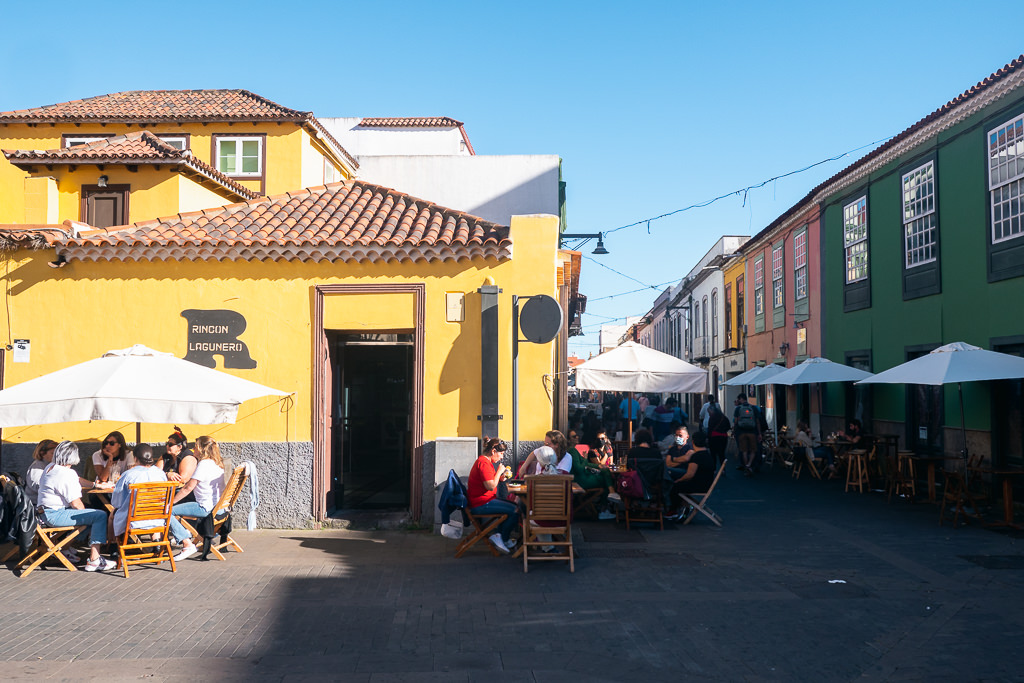
The charming San Cristóbal de La Laguna, a small city close to the capital of Santa Cruz, was the first major settlement on the island. The well-preserved old town is a UNESCO World Heritage site and is largely closed off to traffic, serving as Tenerife’s cultural capital.
Meandering around La Laguna reminded me of visiting colonial towns in Mexico. It is no coincidence, as La Laguna very much served as a blueprint for the New World. The colourful low-rise houses and Spanish colonial architecture will almost make you think you’re not in Europe anymore.
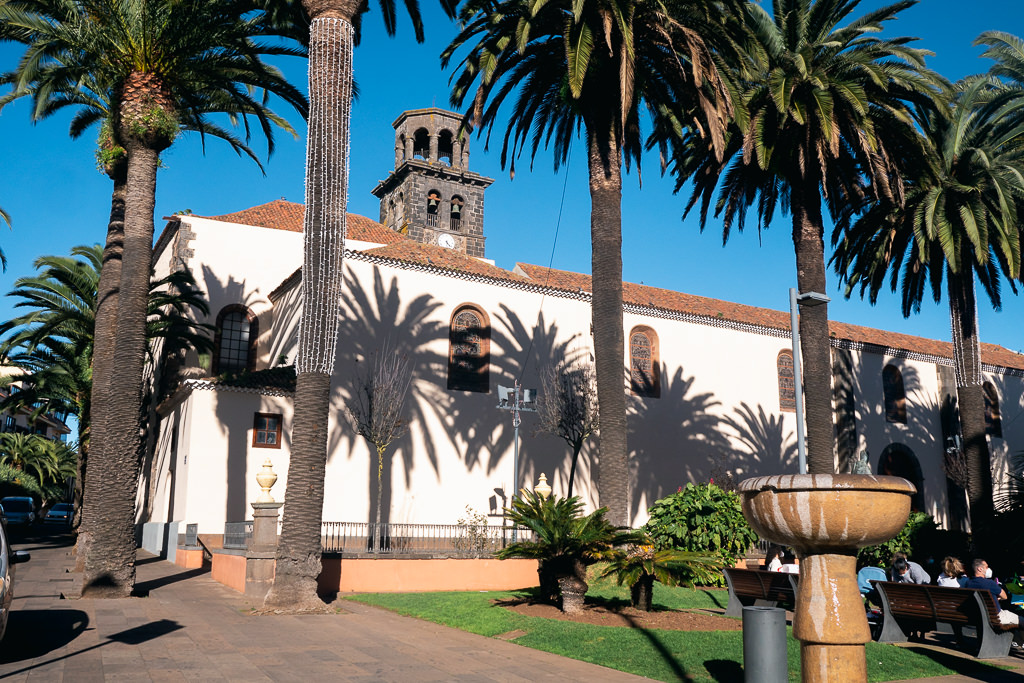
Of all the towns and cities on Tenerife, I was most charmed by La Laguna. The only downside is its high elevation, which makes it considerably colder than the coast. Nevertheless, I stayed in La Laguna for a few days, enjoying the cosy atmosphere and its many speciality coffee, breakfast, and craft beer places.
Drive through the Anaga Mountains
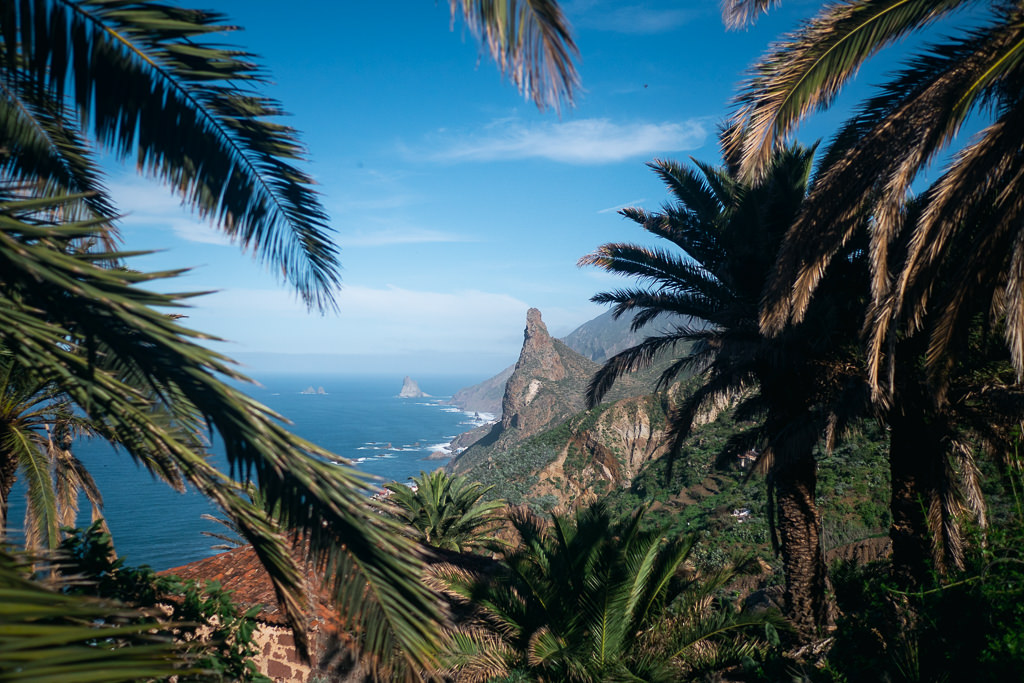
Tenerife’s northeast peninsula is a pure hiker’s paradise, but even if you’re not a keen walker, you owe it to yourself to take at least a road trip around these parts. The windy roads are incredibly scenic, and the viewing points make for worthy stops.
You will notice the names of places around Anaga sounding more exotic than anywhere else. That’s because many of them originate from the Guanche aborigines, who lived here before Spanish colonization. The park is home to the largest number of endemic species in Europe and offers some of Tenerife’s wildest and most dramatic landscapes.
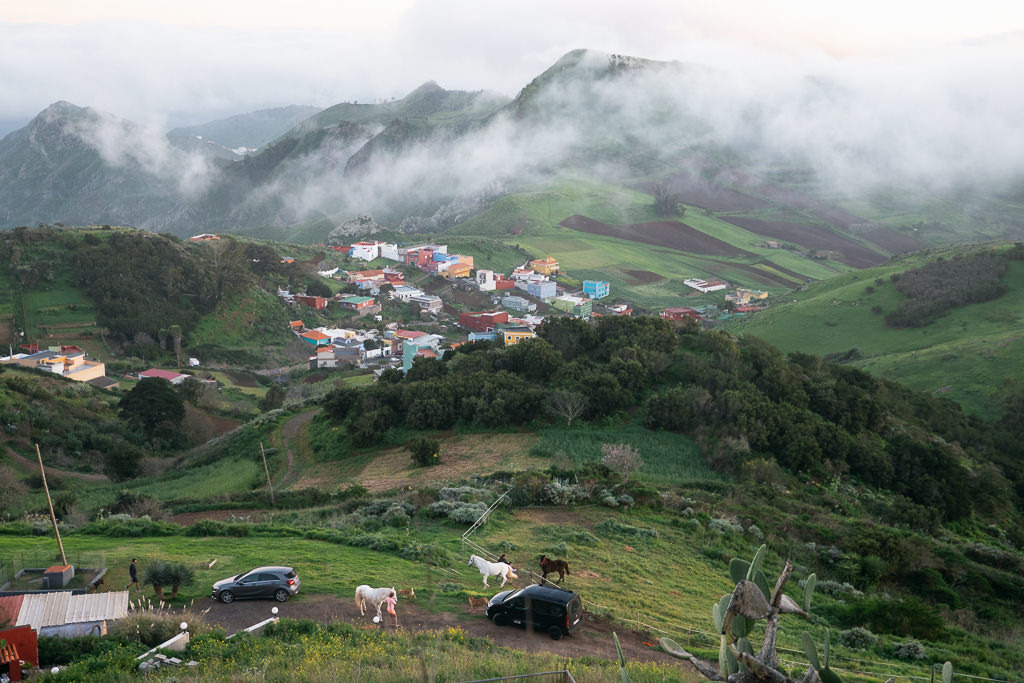
Don’t miss stopping at the Mirador De Jardina for an epic sunset view of central Tenerife and Mt. Teide. The viewing point gets quite busy, to the point where a person is dedicated full-time to managing its tiny parking lot like a constant game of triple-parking Tetris, but it’s worth trying to get a slot as the views are superb.
Relax at a local beach
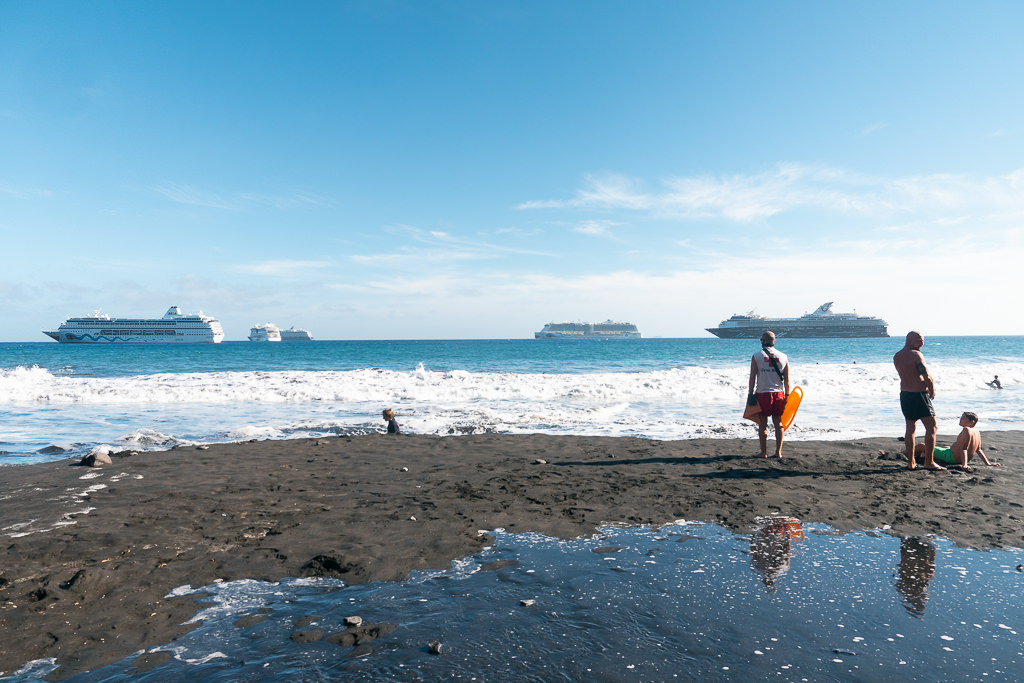
Most foreigners visit the beaches in the south. But ask the locals where they like to hang out, and they’re more likely to mention Playa de Las Teresitas, which is 20 minutes north of the capital. This sandy stretch has a string of small beach bars and is adjacent to a small colourful town named San Andrés.
Mojitos cost half of what you would pay in the resorts of Los Cristianos. If you want to go somewhere even more local, drive a bit further north to Playa del Burro or Playa del Llano, two wild rocky beaches at the cliffs.
See Tenerife’s most scenic village
Many regard the tiny mountain village of Masca as the most beautiful and picturesque on the island. Until the 1980s, it was only reachable on foot or by donkey, which helped preserve its authenticity.
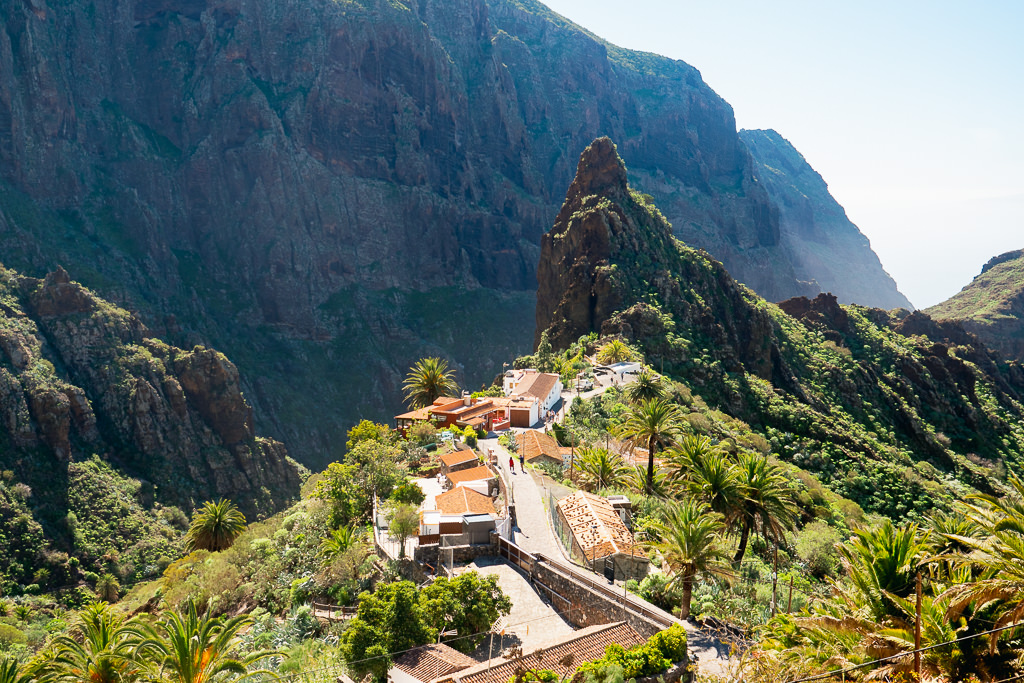
I visited during pandemic times when the village was delightfully quiet. It did seem to have some of the trappings of a hop-off tourist stop, with several souvenir shops and restaurants with great views. I was told that in “normal” times, it’s best to visit the town early or later in the day to avoid the crowds that tour buses spit out around midday.
Driving the windy mountain road leading up to Masca is a reward in itself, arguably the second-best drive on the island after the Anaga Mountains.
Whale and dolphin watching
Thanks to its location in the middle of the Atlantic, Tenerife is an excellent location for spotting whales and dolphins. Pilot whales and bottlenose dolphins are found all year long, while the best chance to see migratory whales (mainly Humpbacks and Fin whales) would be between November and February.
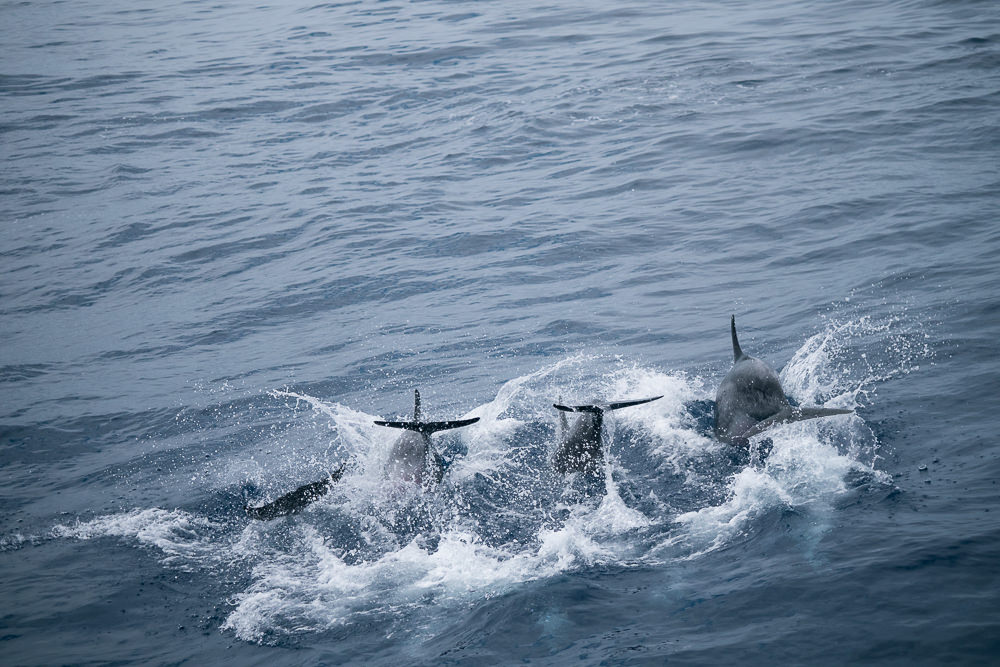
Tours leave mainly from the harbours of Puerto Colon and Los Gigantes, both on the tourist-filled south- and west coasts. These tours offer more than just a chance to see some marine life, as you’ll likely have some great views of the gnarly mountainous northwestern coast.
The local government has instituted specific regulations for these tours’ responsible management, including keeping their distance and not disturbing the creatures. The tours can take anywhere from 2 to 5 hours — bring some entertainment in case you have no luck with sightings. When you do find yourself on the seas surrounded by breaching whales or a pod of dolphins zig-zagging around your boat, you’ll be in heaven. Another blog put together a great overview of all the whale and dolphin watching options.
Charming towns on Tenerife
I should mention that Tenerife’s reputation as a package holiday destination is not undeserved. Parts of the island are overly developed and crowded, particularly Playa de las Americas in the south and Puerto de la Cruz in the north. In this guide, I’m deliberately biasing myself towards the lesser-known aspects of the island.
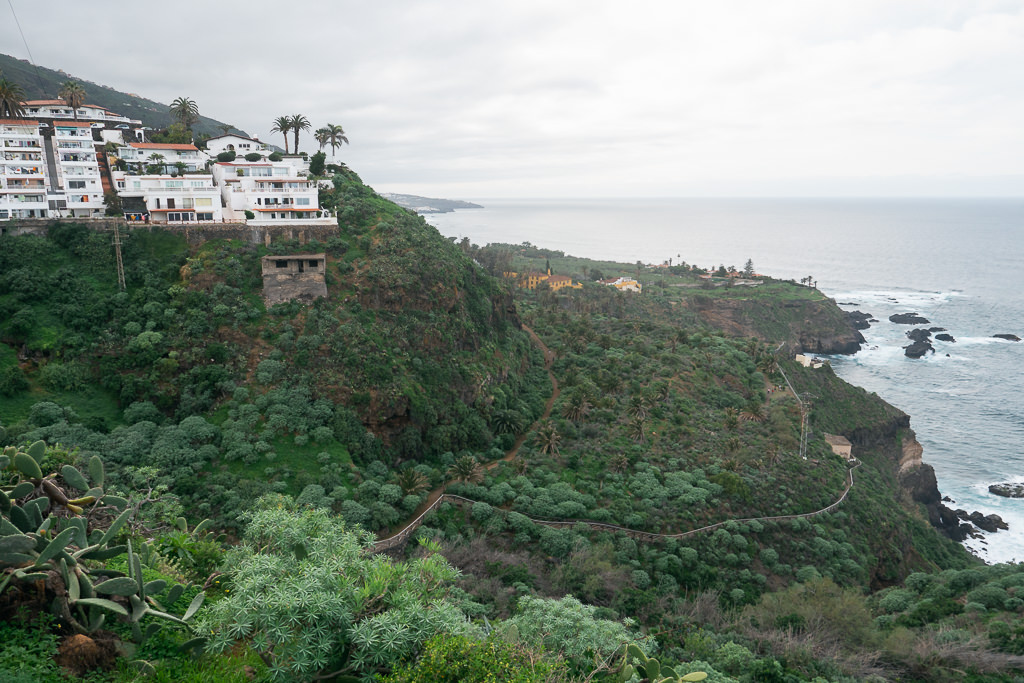
Parts of the northern coast also feature many 1970s-era apartment buildings and other rash developments of which the aesthetics are debatable. Then again, maybe you have to be a bit of a grouch to be bothered by this too much. Most of the towns and villages are nice and inviting, and Tenerife gets pretty relaxed as soon as you get off its main circular road.
San Cristóbal de La Laguna, detailed earlier, gets my vote for the nicest city on the island; it’s lively rather than crowded, and the historic streets are full of charm.
As far as authentic towns go, you won’t find them everywhere, but I think there are a couple of gems you should consider.
La Orotava
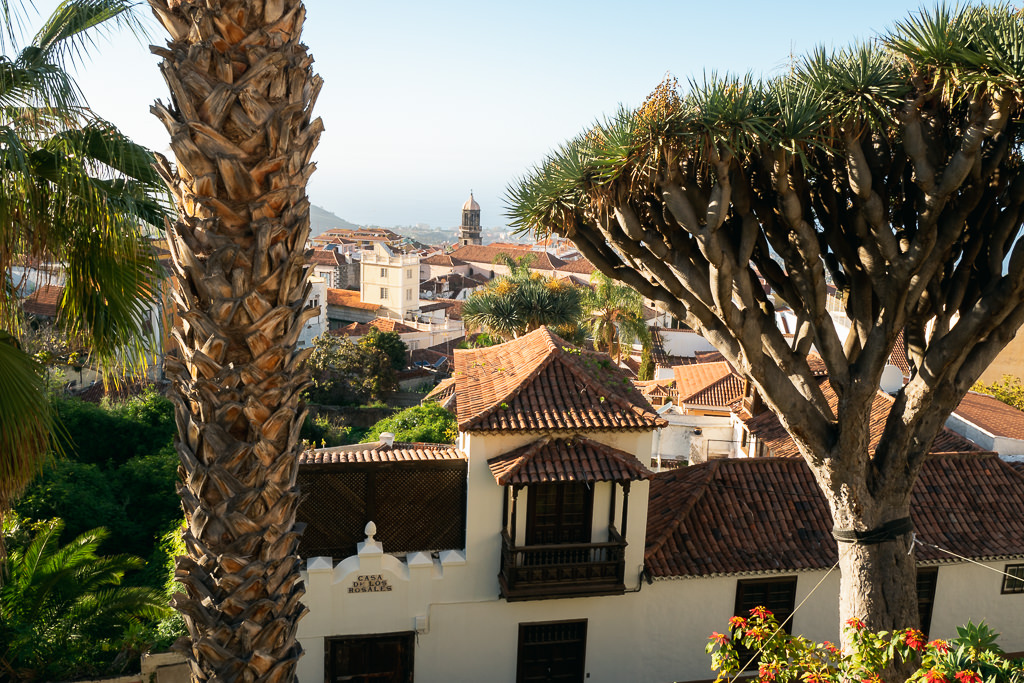
It might not be particularly close to any beach, but staying in this historical town on the green northern side of Tenerife is worth considering. It has some cute cobblestone streets and several museums, one being the Casa de los Balcones, a well-preserved example of the balconied houses typical of the Canaries. Located on the slopes of the central massif, the peak of Mt. Teide frequently pokes up from behind rooftops or at the end of streets in La Orotava.
Icod de los Vinos
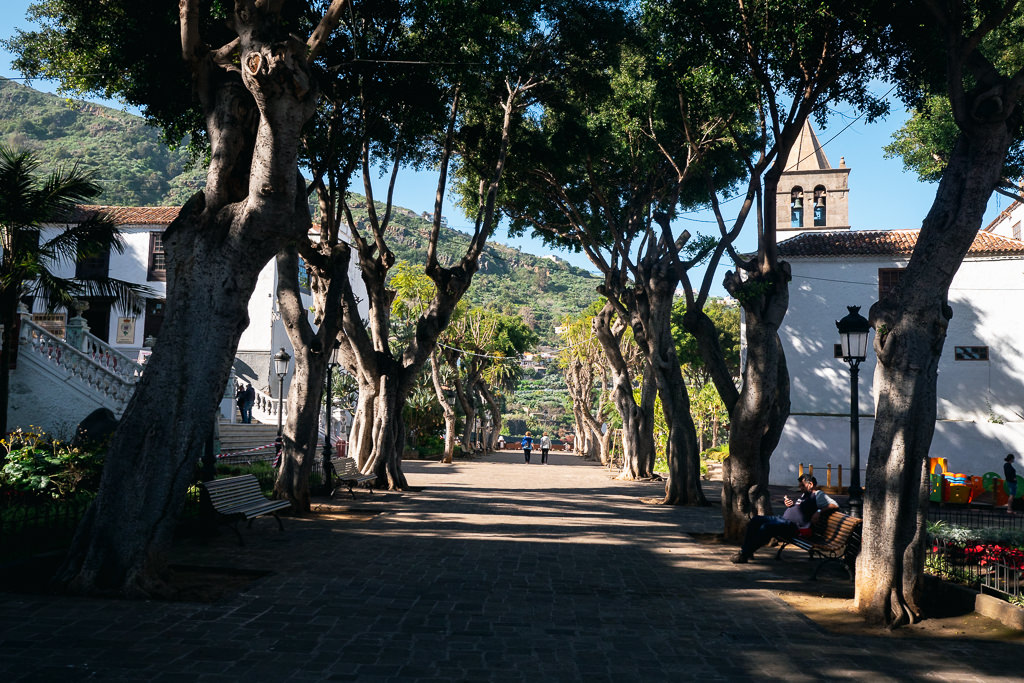
This town’s claim to fame is the magnificently huge dragon tree at its centre, still kept aloft with the help of some metal beams. It’s estimated that this tree is around 600 to 800 years old.
Icos is a cute town that boasts a butterfly farm, a wine-making museum, and a lava tube cave that can be explored with guided tours. Several tasteful souvenir shops sell local produce. It makes for a good base to explore the more remote northwest of Tenerife.
Garachico
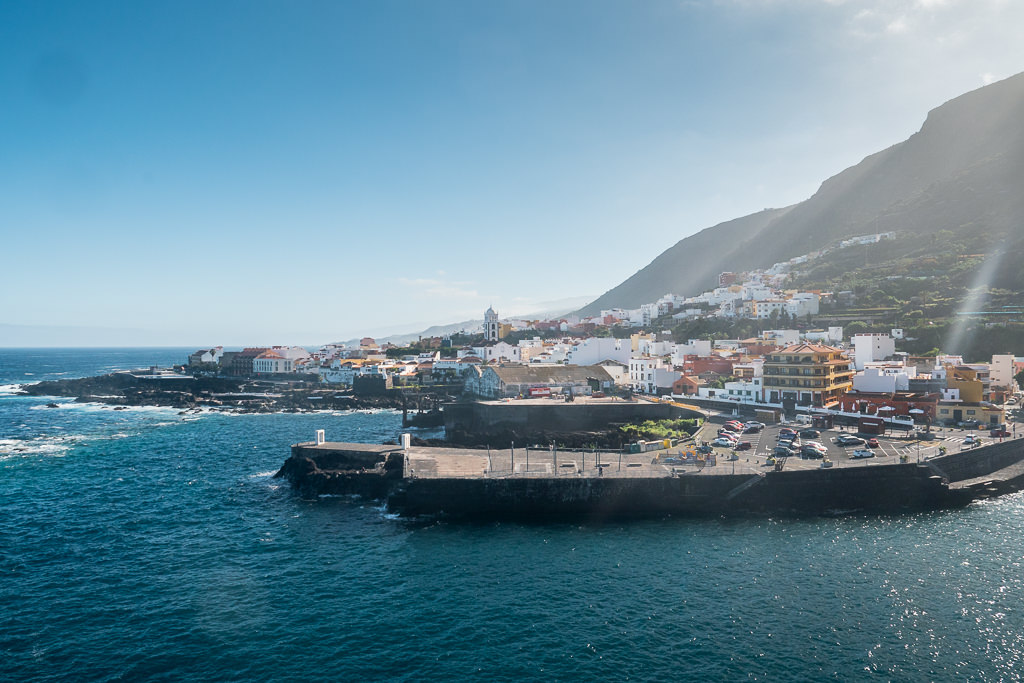
Tucked in a little corner of the northern coast is the small town of Garachico. It has narrow cobblestone streets with colourful houses, looks out onto an uninhabited rocky islet, and is near a set of natural swimming pools once formed by lava flows.
With a backdrop of steep cliffs, it’s a scenic spot to stay. It is particularly convincing in the morning while some of the peaks are still shrouded in clouds and the first sun rays manage to reach the low-lying town.
During my time on the north side of the island, I stayed close to Puerto de la Cruz, which wouldn’t have been my first choice as it has some soulless modern development. If I had to pick a location again, I would undoubtedly choose to stay in thoroughly charming Garachico.
Taganana
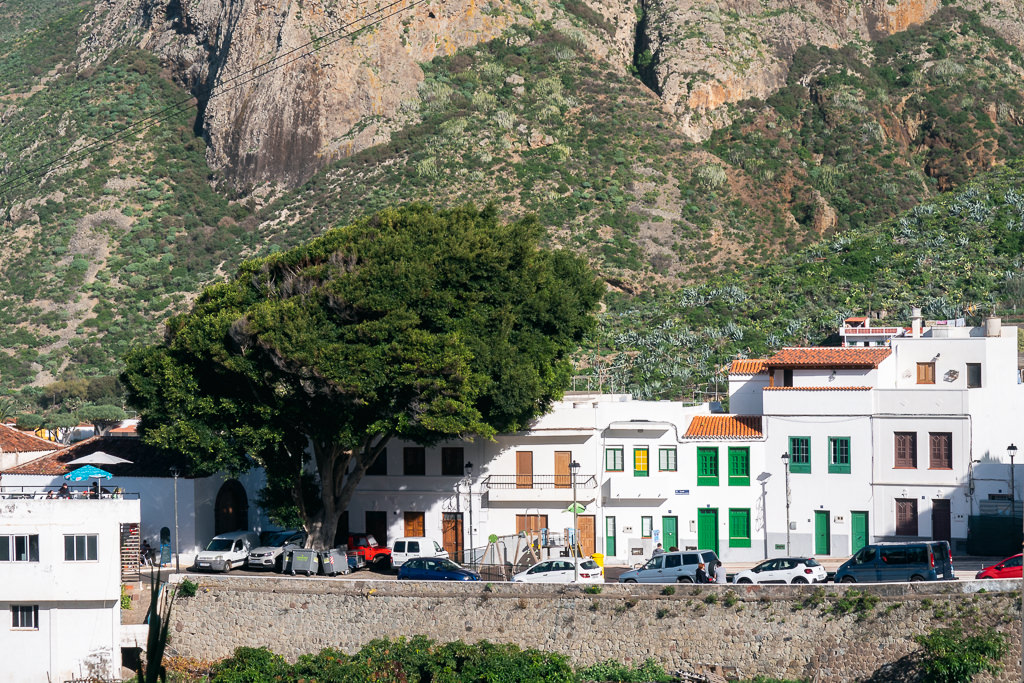
If you truly want to get away from everything, then Taganana is the place. Although located in one of the most out-of-the-way valleys, this is also what makes it so rewarding.
Despite being surrounded by rugged mountains, Taganana was one of the first places the conquistadores settled and from where the entire island was eventually colonized. The traditional houses, churches, and farm terraces will make you feel like you’re a world away from the hustle and bustle of the more developed areas of Tenerife. The hikes around here are stunning and there are wild beaches just a short drive away.
How to get around on Tenerife
The easiest way by far is to explore Tenerife with a rental car. The roads can be busy but are well-maintained and easy to drive. You can look for the best car rental deals on Discovercars.com, where you can compare results from every rental company.
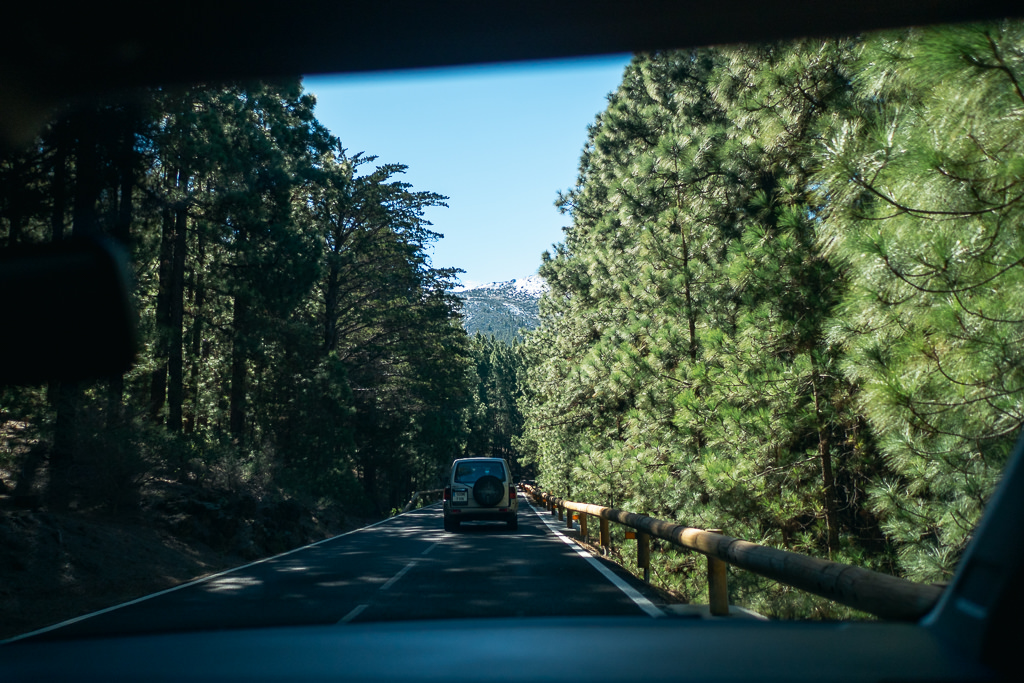
Using public transport to explore Tenerife will limit you somewhat, but it is very do-able. The bus network on Tenerife is surprisingly comprehensive. Even Chamorga, the most remote mountain town I visited, had several bus services a day.
The only area excluded by the bus network is the deserted crater at the centre. Exploring here or getting to the top of Mt. Teide may be easier to do as part of an organized day tour if you don’t have your own transportation.
Some links may be affiliate links, meaning I may earn commission from products or services I recommend. For more, see site policies.
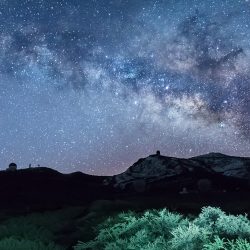
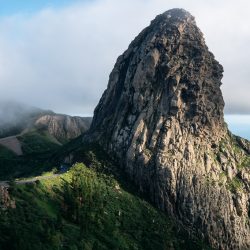




0 comments
Leave a comment
Your email address will not be published. Comments are manually moderated.